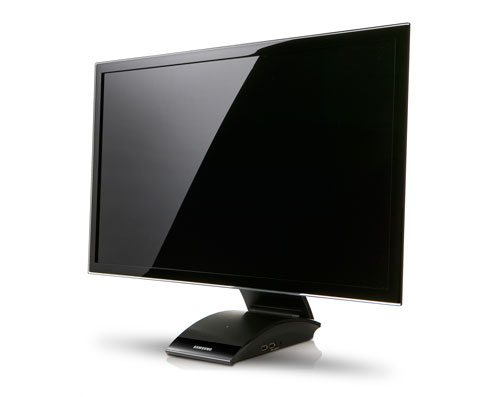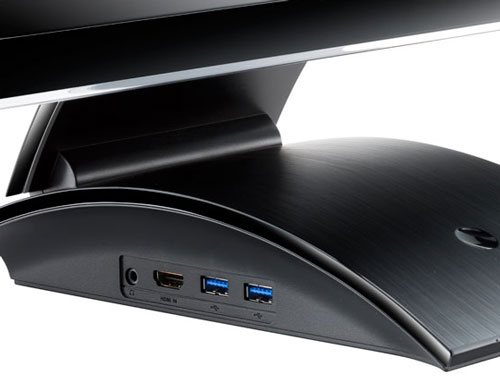
With consumers tiring of incremental resolution and contrast ratio improvements, Samsung is now asking itself what else it can make a screen do that might just make you buy it. With its CA550, available in 23- or 27-inch models, the Korean electronics giant has decided to place its bets on connectivity, lots of it, and it’s a well-considered move.
The CA550, or “Central Station”, is aimed mainly at users who want to be able to connect their laptop to a larger display, along with a keyboard, mouse and external hard drive or other peripherals. It’s also attractive for desktop users who want access to USB ports and an audio jack without having to crawl about beneath a desk.
The model we reviewed had a 23-inch LED-backlit LCD display offering 1920×1080 pixels of resolution along with all of the usual specifications you’d expect from an LED panel today: response time of 2ms and a great contrast ratio.
With four USB ports, two of them the higher speed and higher-power-output USB 3 variety, the Central Station can handle a keyboard, mouse and external drive and still have a port to spare. The inclusion of two USB 3 ports is particularly exciting as it allows users to connect to the monitor and to the Internet via a single, albeit proprietary cable if the monitor is plugged into an Ethernet connection. There’s an Ethernet port at the back of the monitor’s base.

A higher-end model in the same range also includes the ability to connect the monitor wirelessly but, considering our review unit costs a modest R2 499, it’s not worth moaning about the absence of that feature in the base model.
Though it’s possible to share connectivity and gain access to the USB and audio ports on the screen via the supplied USB 3 cable, an HDMI cable is still required to get the display portion of the monitor to work. It’s not a crippling problem, but it would’ve been nice to have had an HDMI cable included in the box.
The Central Station has a “dual hinge”, which can’t swivel or pivot but can move up or down and allows the screen to lie almost entirely flat on its rear. We’re not quite sure what the purpose of this stand is beyond perhaps hiding some cables by pulling the bottom bezel down to desk height, and would have liked it to allow for the screen to move a little higher than it does, but it feels sturdy and moves smoothly and generally does what it says on the box. — Craig Wilson, TechCentral
- Subscribe to our free daily newsletter
- Follow us on Twitter or on Google+ or on Facebook
- Visit our sister website, SportsCentral (still in beta)

